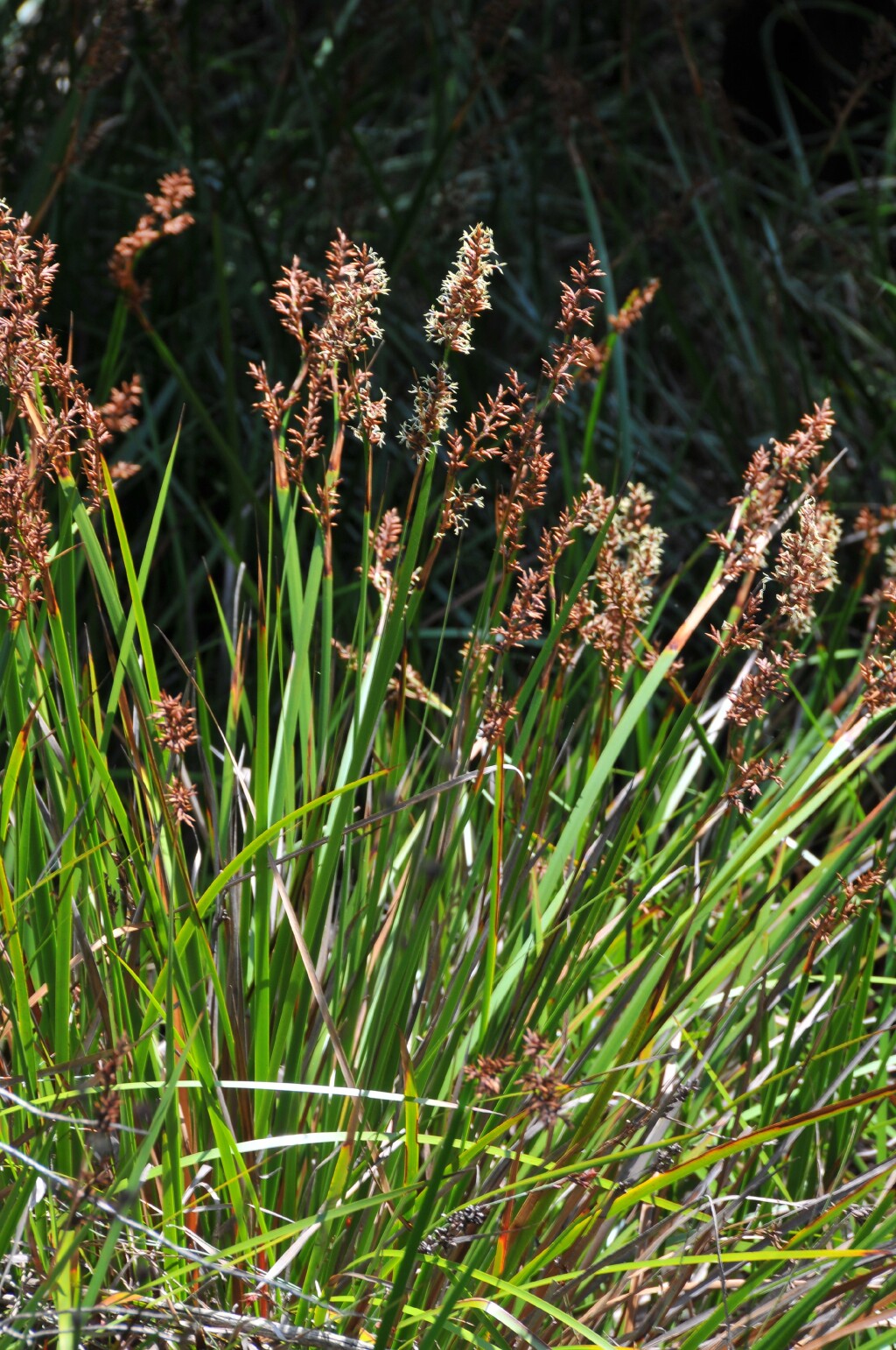Lepidosperma sieberi
Kunth Sandhill Sword-sedgeTufted perennial with long, ± vertical rhizome. Culms rigid, erect, flat, or convex on one face, or concavo-convex, glabrous, smooth or striate, 20–60 cm high, 3–7(–10) mm wide; margins scabrous, sometimes minutely so, sharp. Leaf-blades similar in form to culms but usually shorter, 3–6(–10) mm wide; sheaths straw-coloured or rarely reddish near apex, dark yellow-brown to grey-brown at base, not viscid, ± dull. Inflorescence ovate to oblong in outline, erect, ± dense, 3–15 cm long, 2–4 cm diam.; involucral bract shorter than inflorescence (rarely longer if inflorescence is depauperate). Spikelets numerous, 5–8 mm long; glumes 6–8, puberulous, red-brown to grey-brown, the 2 or 3 lowest empty, shorter than fertile glumes, obtuse to acute, mucronate; fertile glumes 6–7 mm long, long-acute to acute; hypogynous scales 6, whitish, from one-third to three-fifths length of nut. Nut ovoid to obovoid, pale to dark brown, shining, smooth, 2.7–4.0 mm long, 1.3–1.8 mm diam. Flowers spring–summer.
LoM, MuM, Wim, GleP, VVP, GipP, OtP, WaP, GGr, DunT, EGL, EGU, WPro, HSF, HNF, OtR, Strz. Also SA, Qld, NSW, Tas. Common on the coastal hinterland in heathlands and woodlands developed on sandy soils..
Formerly treated in Victoria as Lepidosperma concavum which is now considered to be a New South Wales endemic and restricted to sandstone habitats close to the sea along the Central Coast.
Most, if not all, reported inland occurrences of L. sieberi west of Melbourne are referable to the similar species L. hispidulum and L. laeve. A robust form, resembling L. sieberi but with leaves and culms approaching 10 mm wide has been collected from near Mt Kaye and Mt Coopracambra in far eastern Victoria. It may warrant formal recognition,
Wilson, K.L. (1994). Cyperaceae. In: Walsh, N.G.; Entwisle, T.J., Flora of Victoria Vol. 2, Ferns and Allied Plants, Conifers and Monocotyledons, pp. 238–356. Inkata Press, Melbourne.
 Spinning
Spinning

